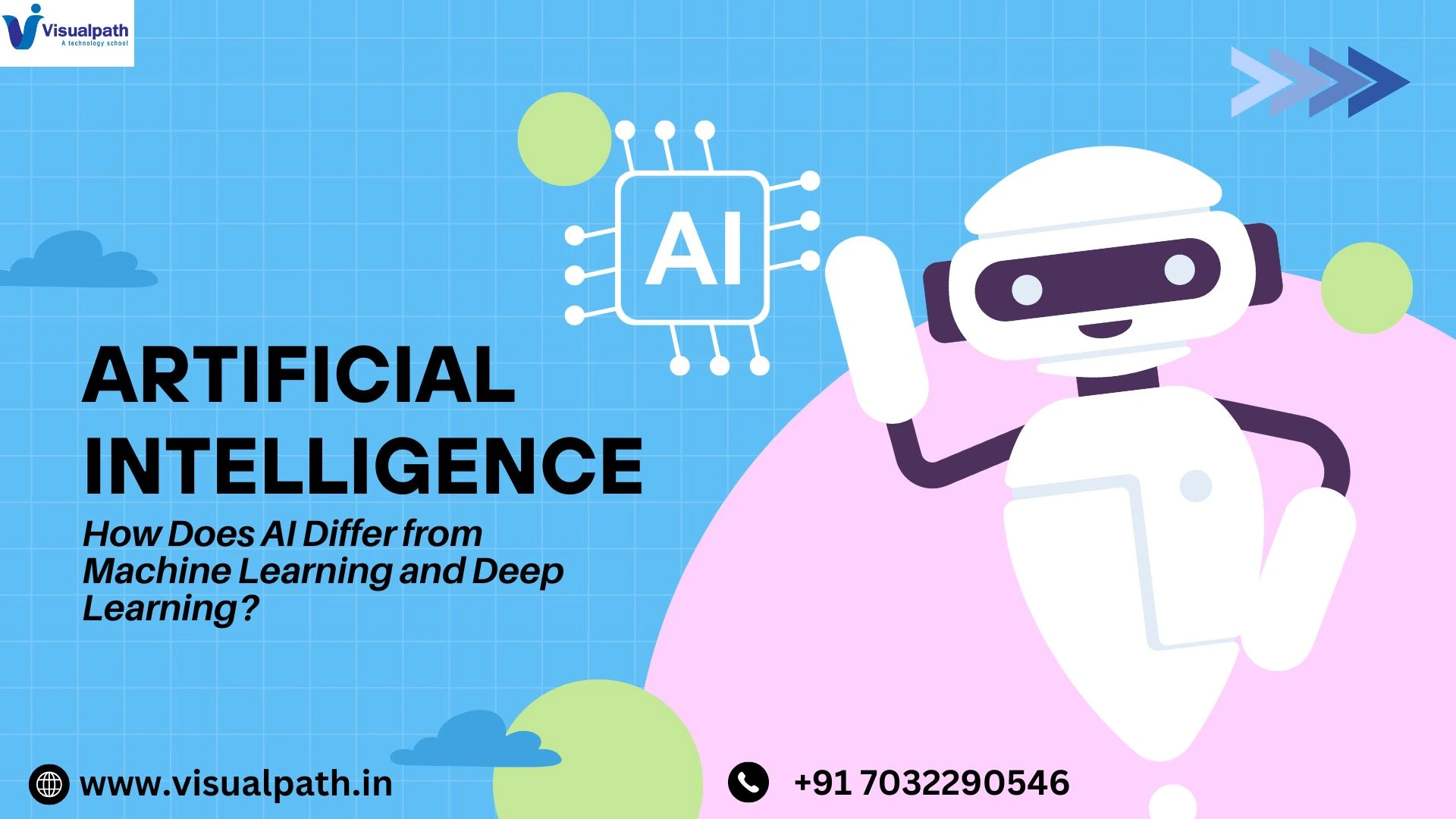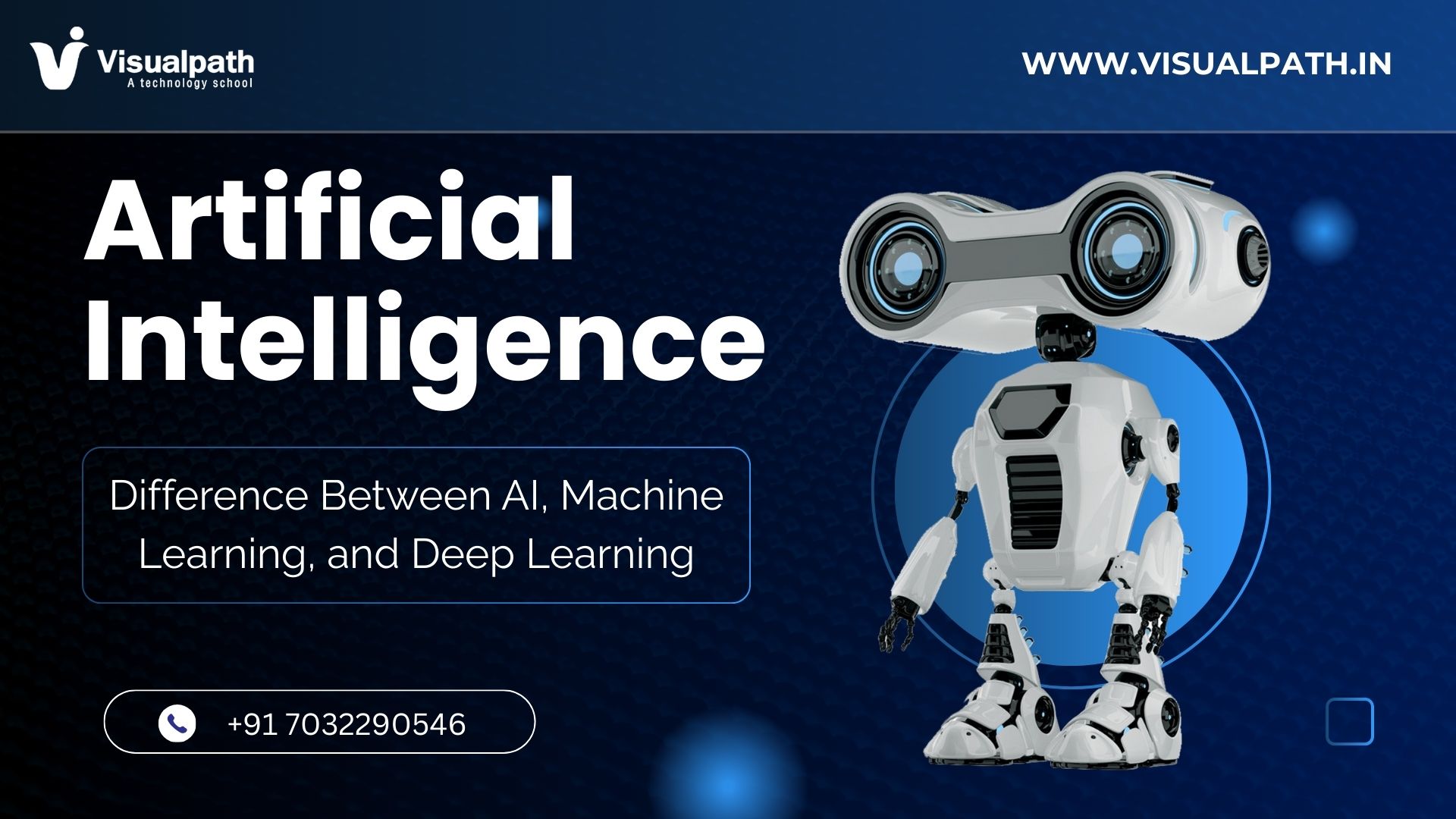Artificial Intelligence (AI) has become a game-changer in enhancing cybersecurity in today’s digital world. As cyber threats continue to rise, organizations are turning to AI to protect their sensitive data and systems. AI helps automate threat detection, strengthen system defences, and significantly reduce the time needed to identify and counter cyberattacks.
1. AI-Driven Threat Detection
One of the most significant contributions of AI to cybersecurity is its ability to detect threats more efficiently than traditional methods. AI systems, particularly those powered by machine learning (ML), can analyze vast amounts of data at incredible speeds, identifying patterns and anomalies that would otherwise be invisible to human analysts. Artificial Intelligence Online Training
For instance, behavioral analytics powered by AI can detect unusual activity within a network, such as an employee accessing files they typically wouldn’t or a sudden surge in network traffic. AI can then flag these deviations as potential threats, which allows cybersecurity teams to respond faster and prevent further damage. Unlike signature-based detection systems that rely on known patterns of malicious activity, AI-driven systems can identify new, previously unseen threats by detecting anomalies in real-time.
2. Automating Threat Response
AI doesn’t just help detect cyberattacks, it can also automate responses to certain threats. This automation is vital, as it allows for immediate action, reducing the time window in which an attack can cause harm. For example, when an AI system detects an intrusion or a suspicious behavior, it can automatically isolate affected systems, block malicious traffic, or initiate predefined security protocols without waiting for human intervention.
Automated incident response powered by AI can significantly reduce the impact of attacks, particularly when time is of the essence. For example, AI-driven systems can mitigate Distributed Denial of Service (DDoS) attacks by dynamically rerouting traffic and blocking malicious IP addresses in real-time. By automating these processes, AI minimizes human error and helps security teams respond more effectively to evolving threats.
3. Enhancing Malware Detection
Traditional malware detection relies on signature-based approaches, where each piece of malware has a unique signature that is identified by the system. However, cybercriminals constantly evolve their techniques, making it difficult for signature-based systems to keep up. AI, particularly deep learning models, has proven to be highly effective at detecting zero-day exploits and new forms of malware that do not have known signatures. Artificial Intelligence Coaching Near Me
By analyzing the behavior of files and programs, AI can predict whether they are likely to be malicious based on previously encountered patterns, even if the specific malware has never been seen before. This proactive approach enables security systems to block malware before it has the chance to execute, providing an additional layer of defense.
4. Predictive Capabilities
Another key benefit of AI in cybersecurity is its predictive capabilities. By using machine learning algorithms, AI systems can analyze historical data to predict potential vulnerabilities and threats. This allows organizations to take preventative measures before an attack occurs. For example, AI can identify patterns in phishing attacks and predict which users might be targeted next, enabling companies to bolster defenses or train employees to recognize suspicious emails.
AI’s ability to predict threats based on past events and trends helps organizations stay one step ahead of cybercriminals. This predictive capability is particularly valuable in industries where the cost of a security breach can be enormous, such as healthcare and finance.
5. Real-Time Threat Intelligence
AI can also enhance cybersecurity by providing real-time threat intelligence. Traditional methods of gathering intelligence can be slow and cumbersome, but AI enables the continuous analysis of cyber threats across multiple sources. This information can be used to update threat databases, enabling systems to detect and mitigate attacks faster. Artificial Intelligence Online Course
AI-powered threat intelligence tools can aggregate data from various sources, such as social media, dark web forums, and technical blogs, to identify emerging threats before they are widely known. This gives organizations a head start in defending against new types of cyberattacks.
6. Reducing Human Error
Cybersecurity relies heavily on human expertise, but human error remains one of the leading causes of breaches. AI can help reduce human mistakes by automating many of the routine tasks in cybersecurity, such as analyzing logs, monitoring network traffic, and updating security patches. By offloading these tasks to AI systems, cybersecurity teams can focus on more complex challenges and improve overall efficiency.
Conclusion
AI is transforming the cybersecurity landscape, providing organizations with the tools they need to combat an ever-growing range of cyber threats. By enabling faster threat detection, automating responses, enhancing malware detection, predicting attacks, providing real-time intelligence, and reducing human error, AI is significantly improving cybersecurity strategies. As cyber threats continue to evolve, AI will play an increasingly important role in ensuring that businesses and individuals remain protected in an increasingly connected world.
Trending Courses: Informatica Cloud IICS/IDMC (CAI, CDI), Azure AI Engineer, Azure Data Engineering,
Artificial Intelligence (AI) has become a game-changer in enhancing cybersecurity in today’s digital world. As cyber threats continue to rise, organizations are turning to AI to protect their sensitive data and systems. AI helps automate threat detection, strengthen system defenses, and significantly reduce the time needed to identify and counter cyberattacks.
1. AI-Driven Threat Detection
One of the most significant contributions of AI to cybersecurity is its ability to detect threats more efficiently than traditional methods. AI systems, particularly those powered by machine learning (ML), can analyze vast amounts of data at incredible speeds, identifying patterns and anomalies that would otherwise be invisible to human analysts. Artificial Intelligence Online Training
For instance, behavioral analytics powered by AI can detect unusual activity within a network, such as an employee accessing files they typically wouldn’t or a sudden surge in network traffic. AI can then flag these deviations as potential threats, which allows cybersecurity teams to respond faster and prevent further damage. Unlike signature-based detection systems that rely on known patterns of malicious activity, AI-driven systems can identify new, previously unseen threats by detecting anomalies in real-time.
2. Automating Threat Response
AI doesn’t just help detect cyberattacks, it can also automate responses to certain threats. This automation is vital, as it allows for immediate action, reducing the time window in which an attack can cause harm. For example, when an AI system detects an intrusion or a suspicious behavior, it can automatically isolate affected systems, block malicious traffic, or initiate predefined security protocols without waiting for human intervention.
Automated incident response powered by AI can significantly reduce the impact of attacks, particularly when time is of the essence. For example, AI-driven systems can mitigate Distributed Denial of Service (DDoS) attacks by dynamically rerouting traffic and blocking malicious IP addresses in real-time. By automating these processes, AI minimizes human error and helps security teams respond more effectively to evolving threats.
3. Enhancing Malware Detection
Traditional malware detection relies on signature-based approaches, where each piece of malware has a unique signature that is identified by the system. However, cybercriminals constantly evolve their techniques, making it difficult for signature-based systems to keep up. AI, particularly deep learning models, has proven to be highly effective at detecting zero-day exploits and new forms of malware that do not have known signatures. Artificial Intelligence Coaching Near Me
By analyzing the behavior of files and programs, AI can predict whether they are likely to be malicious based on previously encountered patterns, even if the specific malware has never been seen before. This proactive approach enables security systems to block malware before it has the chance to execute, providing an additional layer of defense.
4. Predictive Capabilities
Another key benefit of AI in cybersecurity is its predictive capabilities. By using machine learning algorithms, AI systems can analyze historical data to predict potential vulnerabilities and threats. This allows organizations to take preventative measures before an attack occurs. For example, AI can identify patterns in phishing attacks and predict which users might be targeted next, enabling companies to bolster defenses or train employees to recognize suspicious emails.
AI’s ability to predict threats based on past events and trends helps organizations stay one step ahead of cybercriminals. This predictive capability is particularly valuable in industries where the cost of a security breach can be enormous, such as healthcare and finance.
5. Real-Time Threat Intelligence
AI can also enhance cybersecurity by providing real-time threat intelligence. Traditional methods of gathering intelligence can be slow and cumbersome, but AI enables the continuous analysis of cyber threats across multiple sources. This information can be used to update threat databases, enabling systems to detect and mitigate attacks faster. Artificial Intelligence Online Course
AI-powered threat intelligence tools can aggregate data from various sources, such as social media, dark web forums, and technical blogs, to identify emerging threats before they are widely known. This gives organizations a head start in defending against new types of cyberattacks.
6. Reducing Human Error
Cybersecurity relies heavily on human expertise, but human error remains one of the leading causes of breaches. AI can help reduce human mistakes by automating many of the routine tasks in cybersecurity, such as analyzing logs, monitoring network traffic, and updating security patches. By offloading these tasks to AI systems, cybersecurity teams can focus on more complex challenges and improve overall efficiency.
Conclusion
AI is transforming the cybersecurity landscape, providing organizations with the tools they need to combat an ever-growing range of cyber threats. By enabling faster threat detection, automating responses, enhancing malware detection, predicting attacks, providing real-time intelligence, and reducing human error, AI is significantly improving cybersecurity strategies. As cyber threats continue to evolve, AI will play an increasingly important role in ensuring that businesses and individuals remain protected in an increasingly connected world.
Trending Courses: Informatica Cloud IICS/IDMC (CAI, CDI), Azure AI Engineer, Azure Data Engineering,




